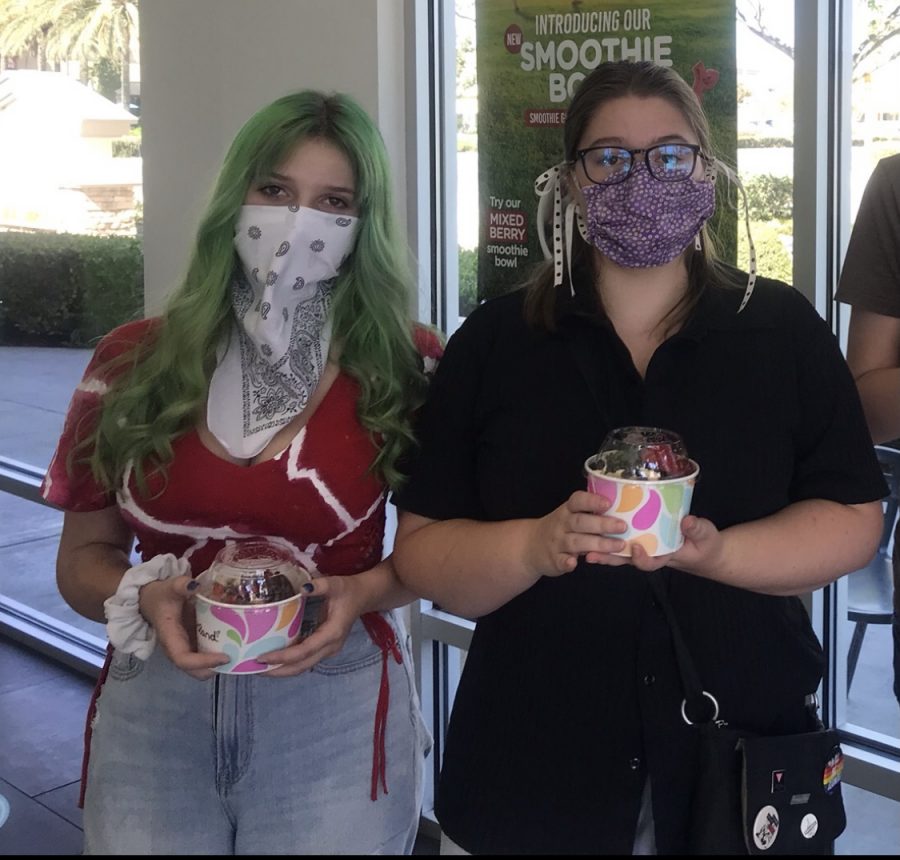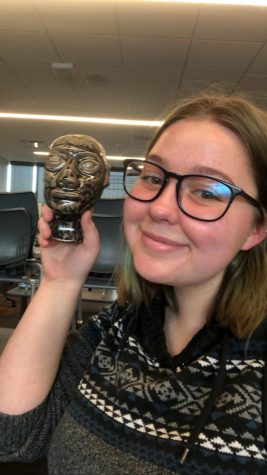Queer Culture: Fashion and Queer Coding
A photo of my younger queer sister and myself. We have both adopted different aspects of queer fashion into our wardrobes.
February 9, 2021
Texas A&M University defined culture as “a way of life of a group of people–the behaviors, beliefs, values, and symbols that they accept, generally without thinking about them, and that are passed along by communication and imitation from one generation to the next.”
Reading Like a Love Story by Abdi Nazemian got me thinking a lot about past and present queer culture. Like a Love Story follows the lives of three friends trying to survive high school during the AIDS epidemic. One character, Uncle Stephan, creates flashcards for the kids that all feature a word or phrase that Stephan finds incredibly necessary to being a queer person. The book club I am a part of asked the members to make our own flashcards. People wrote entries about Mitski, gay tiktok, and cottage core aesthetics, to name a few.
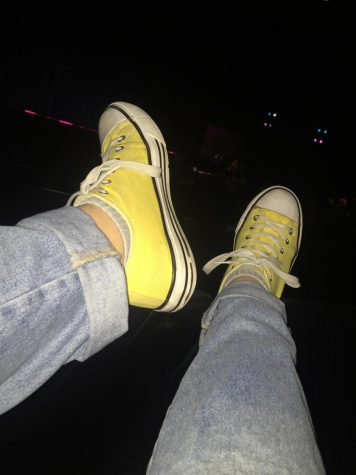
Queer culture has a lot of different components, but personally I am endlessly interested in queer fashion. It is incredibly diverse and has a niche for just about anyone. There are trends that run through the community members but there are also a lot of queer designers and clothes designed for a queer consumer.
Current fashion for the queer community is constantly changing and there is a lot of crossover with other fashion subcultures especially punk fashion. The community tends to incorporate gender dynamics and androgyny into their fashion, playing with the idea of masculine or feminine clothing. Some common clothing choices made by members include Hawaiian t-shirts, big pants, earth tones or incredibly bright colors, political pins or buttons, frog inspired accessories, big and strange earrings, and so much more. There are only a few choices that I personally have in my closet and doesn’t even scratch the surface of how many options queer people have. A good way to learn more about queer fashion is by following queer content creators and incorporating the things you enjoy about their style into your own.
My friend, Milan, is very invested in cottagecore aesthetic that is popular in lesbian and women loving women circles. She says that cottagecore is “super nice because it feels like before this, most fashion trends for queer girls were very masculine. It was very hard to fit in and be identified as a member of the community.” Her own personal style is “more subtle. I tend to do floral patterns and earrings with fruit on them so only people in the community will be able to tell.” If you would like to read more on cottagecore lesbians, here is a link to an Advocate article explaining a little more in-depth: Click Here!
Briar Gose is a student who also dabbles in queer fashion. Gose tended to lean into the butch lesbian stereotype before his transition including, “a lot of flannel…rainbow socks and pins with queer saying on them.” Gose has also “made a bunch of bracelets with the different flags as the colors and wore those all the time.”
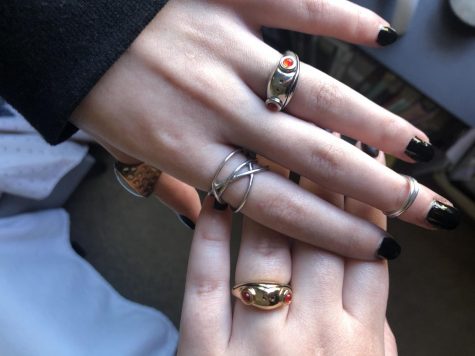
While we are discussing queer fashion, it is beneficial to mention “queer coding” or using symbols to express our queerness to others. A lot of these fashion trends are used to recognize other queer people in public. This is what some people call “gaydar.” Using the term “gaydar” however is frowned upon by some of the community because it makes assumptions about someone’s sexuality or gender identity. Queer coding is more about what elements of queer fashion they have adopted into their style or the elements of queer culture someone has experienced. Queer coding is usually a conscious effort by members of the community to signal queerness. Even as a queer person it’s hard to explain exactly how we can pick up on queerness in others because queer fashion is so vast and often time subtle in daily life.
Aiden Brown told me that “as a gay male, there are plenty of things that I wear that set me aside from other boys my age, even subtly.” He continues to explain how “even with just dyed hair alone, I can tell that I get more attention from the queer community in public, which never happened when I would go out dressing in a generic way.”
Ollivander on tumblr once posted, “Don’t judge a book but its cover, but sometimes the cover does in fact tell you a lot about the book.” They had been commenting on how queer people will often use these subtle forms of expression to communicate with other queer people that they are seen and not alone. The audience or purpose of queer coding is rarely cishet people.
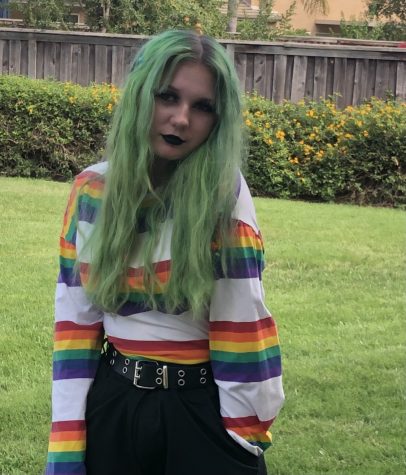
Queer owned businesses are also an incredible contributor to queer fashion and being accessible to a queer consumer. They are widely spread and diverse. Here are a few for anyone looking for queer owned businesses.
TomboyX, a popular underclothes brand, and Otherwild both use item sorting systems that have no relation to gender of the consumer. TomboyX has incredibly cute underclothing for any gender. I have a special place in my heart for Otherwilds pronouns t-shirts and their radical lovers forever t-shirts but they have a wide arrange of products.
Rebirth Garments is a brand that is currently working on reopening their shop which has “gender non-conforming wearables and accessories centering non-binary, trans, disabled and mad queers of all sizes and ages.”
Over all, queer fashion is so rich. This article only covered the surface of fashion within members of the community. This did not cover the history of queer fashion, high fashion queer fashion, queer designers and their contribution, the influence queer arts have on fashion as a whole, and other facets of queer fashion. There is so much to learn that can not be fit into one article but I implore you to look into any elements you find interesting because you never know what you might find.

